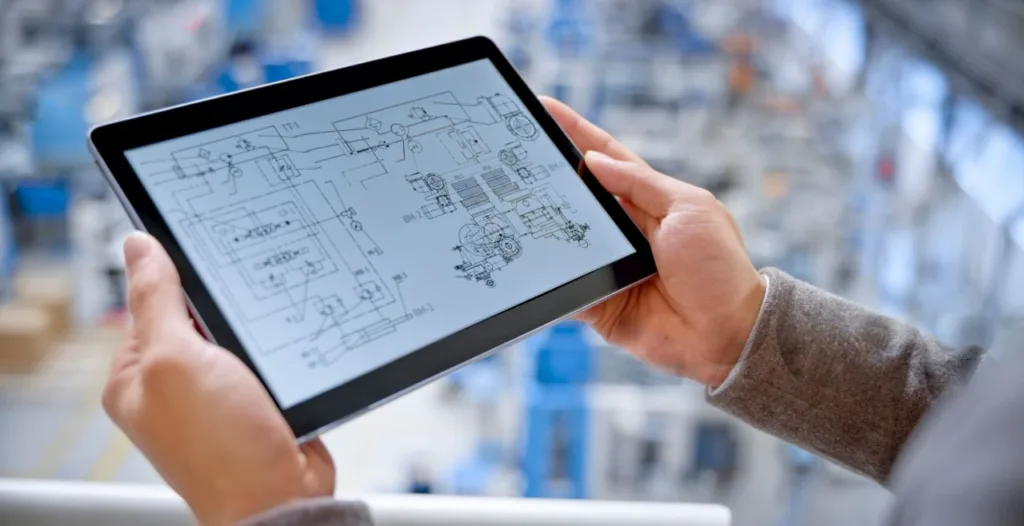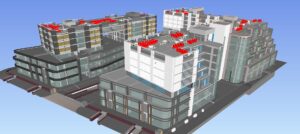
Facilities management (FM) is a multidisciplinary field that involves managing and maintaining various assets and services within an organization’s- built environment.
In multidisciplinary projects, where collaboration among various stakeholders is crucial, integrating BIM into Facilities Management (FM), offers a powerful platform for optimizing operations, enhancing sustainability, and improving overall building performance.
Key Applications of BIM in Facility Management:
Asset Management:
BIM creates a detailed digital inventory of all building components, including their location, specifications, and maintenance history.
By analyzing data from sensors and historical records, BIM can predict maintenance needs, preventing breakdowns and reducing downtime.
Energy Management:
BIM can be used to analyze energy consumption patterns, identify areas for improvement, implement energy-saving measures, and help generate sustainability reports.
Safety and Security:
BIM can be used to identify potential safety hazards, such as fire risks, structural weaknesses, or hazardous materials.
BIM helps in designing and implementing security systems, including access control, surveillance, and emergency response plans.
Renovation and Retrofitting:
BIM enables virtual simulations of renovation projects, allowing for visualization of potential outcomes and identification of potential conflicts.
Role of BIM in Facility Management
BIM is a valuable tool for FM professionals, offering a range of benefits that can enhance collaboration, optimize decision-making, reduce costs, and enhance the overall performance of facilities. By integrating BIM across the FM ecosystem, organizations can create a more sustainable, resilient, and efficient built environment.
- Centralized Platform: BIM provides a shared digital environment where all project stakeholders can access and contribute to the project data.
- Real-time Updates: Changes made to the model are instantly reflected for all team members, ensuring everyone is working with the latest information.
- Interdisciplinary Data Exchange: BIM enables seamless exchange of data between different disciplines, such as architecture, engineering, and construction.
- Clash Detection: BIM software can automatically detect clashes between different components, ensuring that the design is feasible and constructible.
- Data-Driven Insights: BIM provides valuable data and insights that can support informed decision-making throughout the project lifecycle.
- As-Built Models: BIM can be used to create accurate as-built models, providing a reliable reference for future maintenance and renovation.
- Predictive Maintenance: BIM can be integrated with IoT sensors to monitor building performance and predict maintenance needs, reducing downtime and costs.
- Energy Efficiency: BIM can help identify energy-saving opportunities and optimize building systems for improved energy efficiency.
The Importance of COBie Standards
The COBie (Construction Operations Building Information Exchange) standards are essential for BIM in facilities management, providing a common data format for exchanging information about building assets, enabling seamless integration between systems and software.
BIM offer valuable data for Facility and Property Managers, including geometry, building fabric, and technical installations. The “Bill of Materials” extracted from BIM can streamline the transition from construction to operation and maintenance.
BIM data enhances building management by providing visibility into maintenance schedules, task completion, and daily traffic patterns, unlocking new efficiencies.
Advanced technologies like computer vision, AI, and machine learning, powered by the evolving IIoT, enable detailed tracking and analysis of building functions.
This can lead to significant improvements in sustainability, safety, tenant comfort, and lower operational costs, potentially even reducing insurance premiums, through sensors monitoring electrical usage, emissions, space optimization, and health data.
BIM and IoT for Enhanced Facility Management
BIM can be integrated with IoT sensors to gather data from buildings and assets. This data can enhance facility management in areas such as:
- Predictive Maintenance: Identify maintenance needs before they occur.
- Space Utilization: Optimize space usage based on occupancy data.
- Energy Management: Improve energy efficiency through data-driven insights.
- Condition-Based Cleaning: Schedule cleaning based on actual usage.
IoT Sensor Applications for Enhanced Workplace Experience
- Smart Room and Desk Booking: Improve space utilization and occupant experience.
- Improved Comfort and Safety: Monitor environmental conditions and identify hazards.
Conclusion
BIM is a valuable tool for facility managers, offering benefits such as improved data management, visualization, and predictive maintenance, and a sense of what’s next for facility managers. By integrating BIM with IoT, organizations can further enhance facility management and create a more sustainable and efficient built environment.
Ready to Elevate Your Construction Projects?
Let’s build the future together! Contact us today to explore how our BIM solutions can drive your project’s success.



